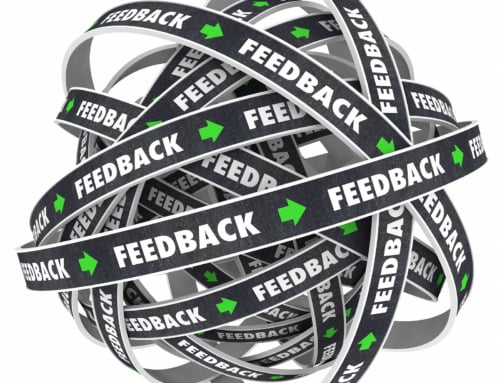From an anthropological perspective, the evolution of agencies follows a predictable path, regardless of geographical location or market focus. Consequently, all five-person agencies tend to have key similarities; the same holds true for agencies boasting 200 or more team members.
For someone starting or running an agency, the foreknowledge of an agency’s expected growth provides the opportunity to make wise planning decisions. After all, it’s always easier to prepare for changes and trade-offs than to have them suddenly thrust at your agency’s door.
Whether your agency is in its infancy or you’ve already built somewhat of a legacy, you need all the information you can get to pivot correctly. Today, according to research, we are seeing a 38% reduction in average agency client revenue, so any chance to play Nostradamus is a significant opportunity.
Analyzing The Metamorphosis Of A Standard Agency
The top types of agency players include the brand-new agency with up to five employees, the mid-size agency of six to 12 employees and the more robust agency of 13 to 25 employees. Each agency arrangement has its own pros and cons, not to mention its possibilities for growth.
In the smallest of agencies, everyone wears many hats, including the owner. Not only is the agency founder at the helm, but she’s also directing everyone’s decisions. Rather than a flat hierarchy, all personnel get their marching orders from one boss. Although this might seem chaotic, it’s necessary; money is tight and resources are stretched thin.
A young agency of five or fewer people develops a desire to take any client, no matter the client’s needs, size, vision, etc. How else can it build a portfolio other than by saying “yes” without constraints? Anyone with marketing and advertising needs is a prospect, from the owner’s church buddy to a team member’s next-door neighbor. Efficiency? It doesn’t exist. It’s replaced by a sense of reinvention and survival.
Eventually, a small agency with grit and hustle will expand its employee base. As the sixth, seventh and eighth employees come into the picture, a skeleton process develops. Despite the tribal knowledge that’s verbally passed on, protocols become structured. Sure, the owner is still doing a lot of client work and working at the business, but now he’s also thinking about administrative needs that weren’t there before.
The closer the agency gets to a dozen employees, the more urgent the need for nonbillable positions like accountants or business managers. Now, this means the revenue producers are not just covering their own salaries — they’re covering also the salaries of others (including gig workers). Is it any wonder, then, that this size agency often has a gorilla client that accounts for 20% or more of revenue? Unfortunately, a gorilla is an asset and a liability. One misstep, and suddenly cash flow could slow to a trickle.
Let’s say an agency realizes it can expand into the 13-plus employee realm. It’s time to define a new, intentional norm. Without systems, the agency may break. Thus, the agency owner has to let go and become more prescriptive in the way the team is arranged. No longer is one person going to spend time in several developments — she must choose accounts or the creative department. Ideally, everyone will fall into a box. Otherwise, processes will fall through the cracks.
Certainly, each person will wear multiple hats, but those hats will be better defined. A hierarchy will develop with department heads and a middle management layer. The owner can work on high-level client development and the day in, day out work can land on a trusted colleague’s to-do list. Surprisingly, this time period is emotionally charged. Longtime staffers may feel uncomfortable moving from a family to a team. And owners might not like the necessary disconnect between them and their employees.
At the same time, decision making at this third agency growth stage turns from “let’s all discuss this” to “I’m the owner, and here’s what I want us to do.” It’s a game shift, and some players feel frustrated because they don’t understand the rules. However, this type of top-down resoluteness keeps an aura of discipline and drives the team toward the owner’s preferred specialization and niches. And that brings us to the notion of the boutique agency.
Advice For Agencies With 13-Plus Employees
If you’ve weathered the years as an agency and your staff includes more than a dozen individuals, congratulations! You’re at the sweet spot. However, you need to make sure you’re making smart choices, including these three top considerations:
1. Avoid the gorilla.
Feel like your client-to-revenue ratio is unbalanced in favor of one business? Think about how you can create a niche so you don’t have a gorilla. Niche agencies can thrive in this segment as long as they don’t have a single client that could suddenly pull the rug from beneath them and force them into layoffs or bankruptcy. Remember the cautionary tale that happened to Express Scripts not long ago: Its shares plummeted because one of its largest clients publicly said it was discontinuing its Express Scripts contract.
2. Hook your local pond’s big fish.
Every agency has a local or regional pond. If you’re still focused on generalist deliverables, size up the biggest fish you have in your area and do your best to hook it. Sure, you’re basically geographically bound, but that doesn’t mean you can’t level up the size of your average client.
3. Master a niche for out-of-market clientele.
Interested in becoming a full-service integrated marketing agency not confined by geographic boundaries? Master a specialized niche so clients not in your backyard feel comfortable coming to you because you’re the best. Specialization areas include SEO, branding and digital media.
Not quite where you know you can be as an agency? Re-evaluate your organization’s systems and plans from top to bottom. Then, make the changes you need to enjoy all the fruits of being in a sweet spot.
This article originally appeared on Forbes.






